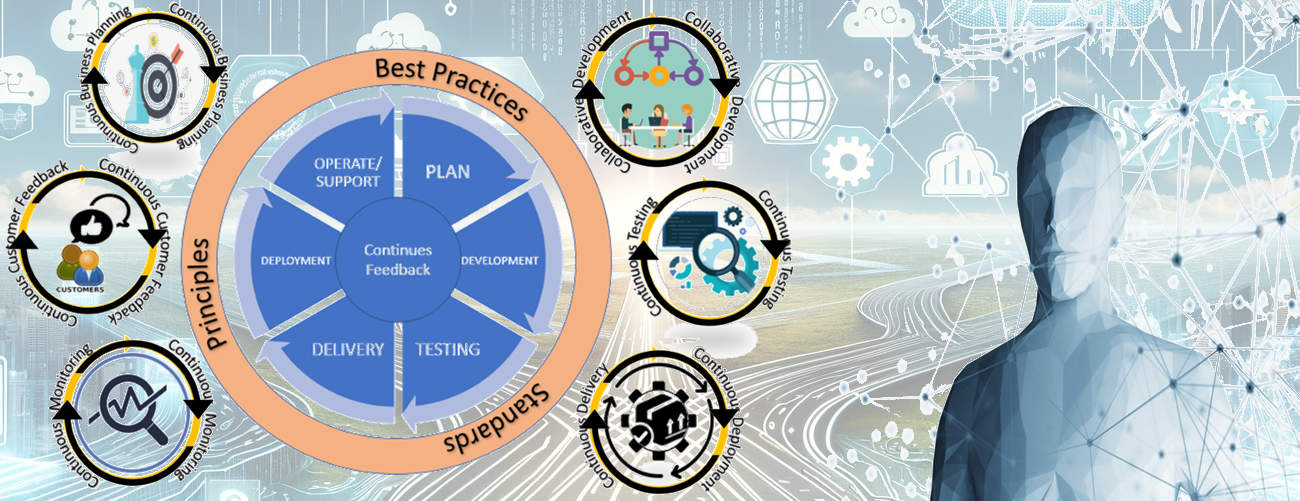Understanding DevOps Trajectories and Future Trends
To gauge where DevOps is headed, let’s dissect the trends that are shaping its future with a human eye – looking at the whys, the evidential support, and the logical progression.
Infrastructure as Code (IaC)
Why the Trend?
- Automation: The automation of infrastructure setup through IaC is akin to teaching a chef to cook by themselves – it’s a kitchen that runs on code, not sweat.
- Scalability: With IaC, scaling up feels less like climbing a mountain and more like adjusting your office chair – it’s that simple.
- Cost-Effectiveness: Automating environments cuts down on manual meddling, saving the pennies where it counts.
Evidence: Cloud computing's boom has made IaC a must-have. A study by Grand View Research pins the IaC market at USD 1.1 billion in 2020, with a growth sprint to continue through 2028.
Shift-Left Security
Why the Trend?
- Early Detection: It’s like checking for holes in your boat before you hit the water – early security checks keep you dry and safe.
- Compliance: As regulations tighten like a drum, shift-left security embeds compliance into the dev lifecycle, making sure you hit the right notes.
- Reduced Costs: Fixing bugs early is like catching a typo before you print a thousand flyers – it saves resources and face.
Evidence: The aftermath of security breaches has put security in the spotlight. Verified Market Research casts the DevSecOps market’s trajectory from USD 2.55 billion in 2020 to a staggering USD 23.42 billion by 2028.
AI and Machine Learning in DevOps
Why the Trend?
- Predictive Analytics: AI's predictive power in DevOps is like weather forecasting for IT – it helps you plan for the storm.
- Intelligent Automation: ML takes past lessons to heart, teaching systems to self-optimize like a self-improving robot.
- Enhanced Decision-Making: AI in DevOps is like having a wise counsel in your corner, helping you make smarter deployment choices.
Evidence: The complexity and data deluge in DevOps demand AI and ML's helping hand. Market reports underscore AI and ML as increasingly essential tools in the DevOps toolkit.
Serverless and Function-as-a-Service (FaaS)
Why the Trend?
- Reduced Overhead: Going serverless is like moving from managing a zoo to watching a nature documentary – it’s all about the show with none of the shoveling.
- Cost Savings: With serverless, costs shrink like cotton tees – you only pay for what you use.
- Focus on Code: Serverless lets developers stick to coding, freeing them from the server shackles.
Evidence: The drive for developer productivity and operational efficiency is fuelling serverless adoption. Growth forecasts show a clear tilt towards these nimble architectures.
Microservices and Container Orchestration
Why the Trend?
- Flexibility: Microservices offer the flexibility of building blocks, snapping together to form robust systems.
- Resilience: They bring the resilience of a well-trained team – if one member stumbles, the rest keep the game going.
- Technological Advancements: Containers have come of age, and Kubernetes is the maestro directing this symphony of services.
Evidence: The CNCF reports an 83% surge in Kubernetes usage in production – a clear vote for microservices and container orchestration’s staying power.
GitOps
Why the Trend?
- Version Control for Everything: GitOps extends the meticulous tracking of version control beyond code to the whole infrastructure, like a librarian keeping tabs on every book.
- Improved Collaboration: It fosters teamwork, making merging changes as communal as a potluck.
- Enhanced Automation: GitOps brings automation to deployment, making it as reliable as your morning alarm.
Evidence: The concept of GitOps is winning hearts and minds, growing fast because it streamlines deployment with the precision of version control.
In conclusion, the direction of DevOps is underpinned by both the tangible benefits observed and the solid market research validating these trends. They’re setting the stage for a future where building and delivering software is smarter, more secure, and incredibly efficient.


